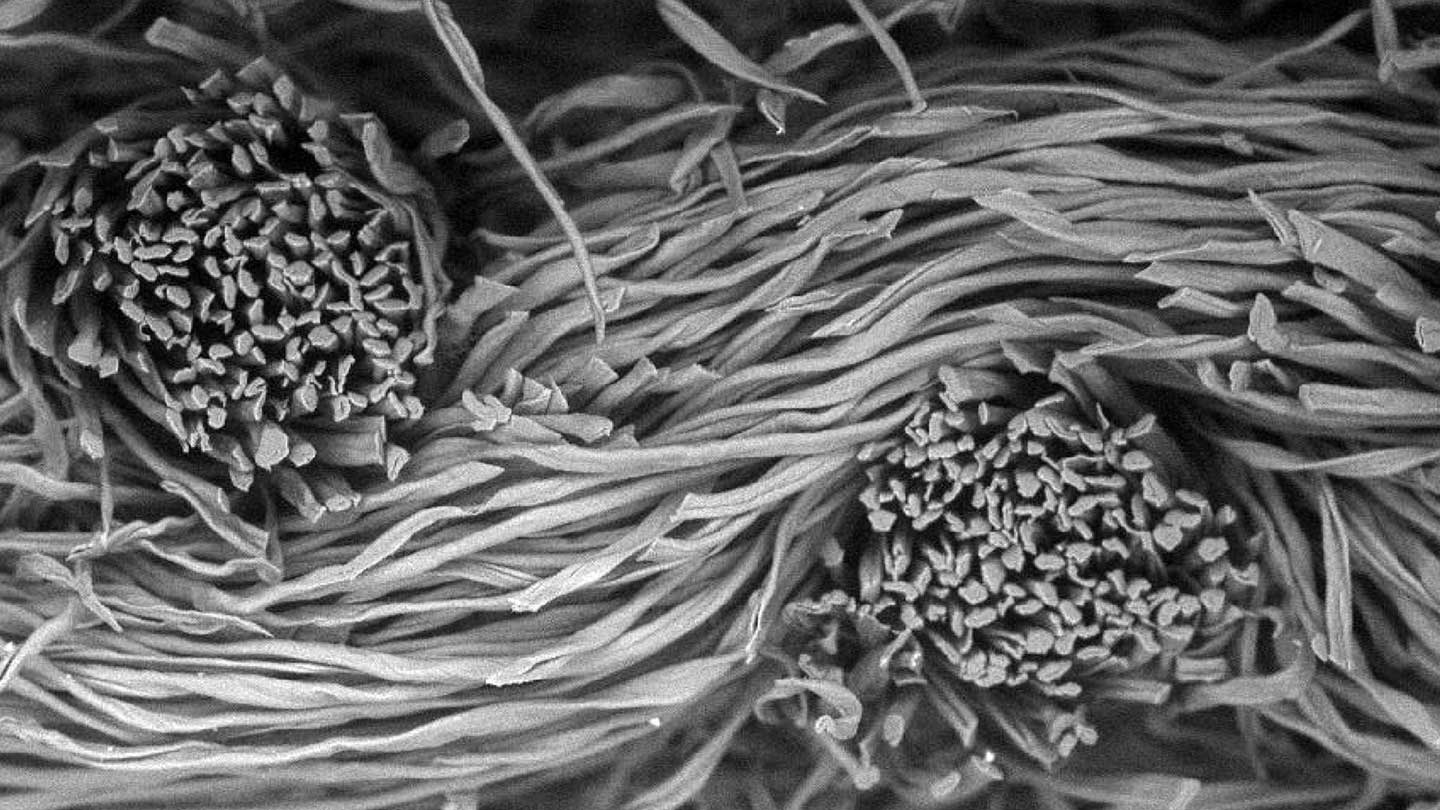You are here
Micoscopic study shows why cotton is a good material for masks.
Primary tabs
 Microscopic images of face masks show they slow spread of COVID-19 | Science News Important insights into the particle-filtering properties of different fabrics also offer a sense of the unseen, textured world of face masks. Science News
Microscopic images of face masks show they slow spread of COVID-19 | Science News Important insights into the particle-filtering properties of different fabrics also offer a sense of the unseen, textured world of face masks. Science News Studying fabrics at very high magnification helps determine how some face masks filter out particles better than others. And the close-ups reveal an unseen beauty of the mundane objects that have now become an essential part of life around the world.
As scientists continue to show how effective masks can be at slowing the spread of the new coronavirus, particularly when they have a good fit and are worn correctly, some have taken microscopic approaches (SN: 2/12/21).
“Embedded in microscale textures are clues as to why materials have various properties,” says Edward Vicenzi, a microanalysis expert at the Smithsonian’s Museum Conservation Institute in Suitland, Md. “Unraveling that evidence turns out to be a fun job.”
Before the pandemic, Vicenzi spent his days observing meteorites, stones and other museum specimens under the microscope. But in March 2020, as the COVID-19 pandemic progressed, he and colleagues from the National Institute for Standards and Technology in Gaithersburg, Md., felt a strong desire to contribute to beating back the virus. So they started studying face-covering materials instead.
Using a scanning electron microscope, Vicenzi and colleagues have examined dozens of materials, including coffee filters, pillowcases, surgical masks and N95 masks. In 2020, the team found that N95 respirator masks are the most effective at providing protection from aerosols like the ones in which SARS-CoV-2, the virus that causes COVID-19, travels. And the researchers reported that synthetic fabrics, like chiffon or rayon, don’t trap as many particles as tightly woven cotton flannels.
Microscopic textures can explain each fabric’s ability to filter out aerosols. The random nature of cotton fibers — with its wrinkled texture and complex shapes such as kinks, bends and folds — probably allows cotton to trap more nanoscale particles than other fabrics, Vicenzi says. In contrast, polyester fabrics have highly organized, mostly straight and smooth fibers, which makes them less efficient as face masks.
Cotton flannels also provide additional protection by absorbing moisture from breath, Vicenzi and colleagues report March 8 in ACS Applied Nano Materials....



Recent Comments